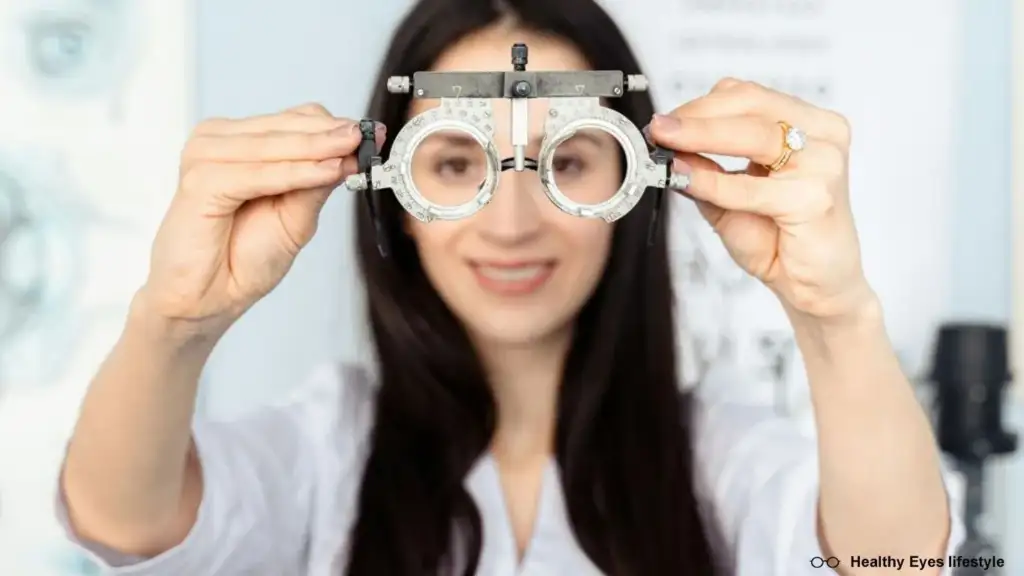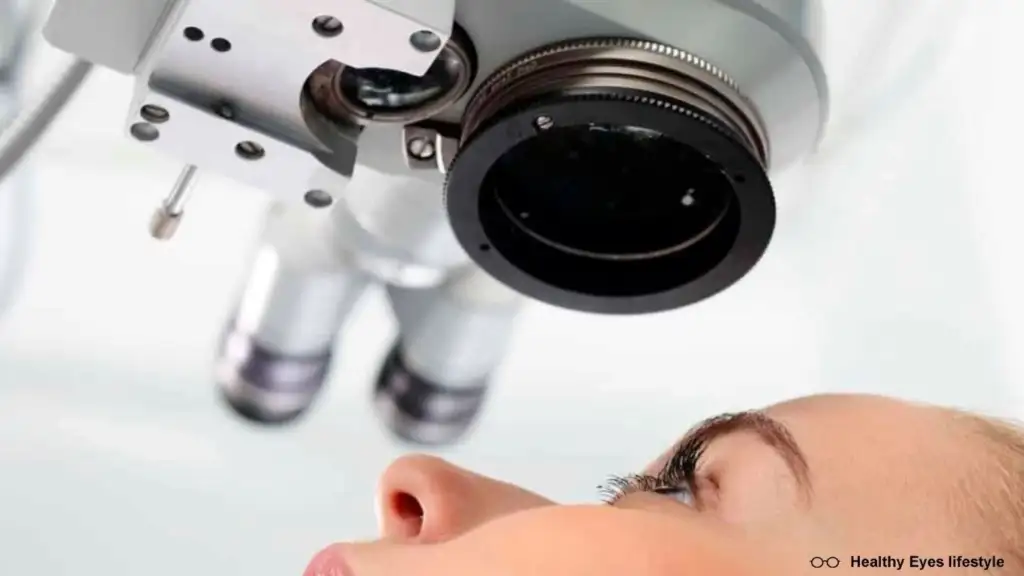Share This Article
Table of Contents
Your eyes are vital organs that allow you to see the world around you. Maintaining good eye health is crucial for overall well-being, yet many people suffer from common eye conditions that affect their vision. This article aims to provide an in-depth understanding of these eye conditions, including causes, symptoms, and treatments.

Why is Eye Health Important?
Our eyes are constantly exposed to screens, dust, and environmental factors that can impact their health. Regular eye check-ups are essential for diagnosing issues early on, especially since many eye problems develop gradually. By understanding common eye conditions, you can better protect your vision and overall eye health.
1. Myopia (Nearsightedness)
What is Myopia?
Myopia, commonly known as nearsightedness, is a refractive error where distant objects appear blurry while close objects remain clear. It occurs when the eye’s shape causes light to focus in front of the retina rather than directly on it.
Causes of Myopia
- Genetics: Family history of nearsightedness increases risk.
- Environmental factors: Prolonged activities like reading or screen time may strain the eyes.
- Eye shape: An elongated eyeball or overly curved cornea can contribute to myopia.
Symptoms
- Blurred vision when looking at distant objects
- Eye strain
- Headaches
Treatment
Myopia can be corrected with prescription glasses, contact lenses, or refractive surgery (e.g., LASIK).
2. Hyperopia (Farsightedness)
What is Hyperopia?
Hyperopia, or farsightedness, is a refractive error where distant objects may appear clearer than nearby objects. It occurs when the light entering the eye focuses behind the retina, often because the eye is too short.
Causes of Hyperopia
- Genetics: A family history of farsightedness can increase the risk.
- Age: Older individuals are more prone to this condition.
Symptoms
- Blurry vision, especially when looking at close objects
- Eye discomfort and strain
- Headaches after reading or close-up work
Treatment
Corrective lenses, such as eyeglasses or contact lenses, can improve vision. LASIK surgery may also be an option for some individuals.
3. Astigmatism
What is Astigmatism?
Astigmatism is a condition where the eye’s cornea or lens has an irregular shape, leading to blurred or distorted vision at all distances. Unlike myopia or hyperopia, astigmatism can affect both near and far vision.
Causes of Astigmatism
- Irregularly shaped cornea or lens
- Genetic factors
- Eye injuries or surgeries
Symptoms
- Blurry or distorted vision at all distances
- Eye strain and discomfort
- Headaches
- Squinting to see more clearly
Treatment
Astigmatism can be corrected with eyeglasses, contact lenses, or refractive surgery like LASIK.

4. Presbyopia
What is Presbyopia?
Presbyopia is an age-related condition that causes difficulty focusing on close objects. This typically starts around the age of 40 and is due to the hardening of the lens inside the eye, reducing its flexibility.
Causes of Presbyopia
- Age: The natural aging process makes the eye’s lens less flexible.
Symptoms
- Difficulty reading small print
- Holding objects at arm’s length to see clearly
- Eye strain
- Headaches
Treatment
Reading glasses, bifocals, multifocal contact lenses, or surgery (such as conductive keratoplasty) can help improve near vision.
5. Cataracts
What are Cataracts?
Cataracts occur when the eye’s natural lens becomes cloudy, affecting vision. They usually develop slowly and are common in older adults.
Causes of Cataracts
- Age-related changes in the lens
- UV light exposure
- Diabetes
- Smoking
- Long-term use of corticosteroid medications
Symptoms
- Cloudy or blurred vision
- Glare sensitivity, especially in bright light
- Poor night vision
- Fading or yellowing of colors
Treatment
Cataracts can be treated with surgery, where the cloudy lens is replaced with an artificial lens to restore clear vision.
6. Glaucoma
What is Glaucoma?
Glaucoma is a group of eye conditions that damage the optic nerve, often due to high pressure inside the eye. If left untreated, it can lead to vision loss and blindness.
Causes of Glaucoma
- Increased intraocular pressure (IOP)
- Age: Individuals over 60 are at higher risk.
- Family history of glaucoma
- Certain medical conditions like diabetes
Symptoms
- Slow vision loss (usually starts with peripheral vision)
- Eye pain
- Headaches
- Blurred vision
- Halos around lights
Treatment
Glaucoma treatment focuses on lowering eye pressure, either through eye drops, oral medications, laser therapy, or surgery. Early diagnosis is crucial to prevent irreversible damage.
7. Dry Eye Syndrome
What is Dry Eye Syndrome?
Dry Eye Syndrome occurs when the eyes do not produce enough tears or the quality of tears is poor. This leads to inflammation and discomfort.
Causes of Dry Eye Syndrome
- Aging (especially in postmenopausal women)
- Medications (like antihistamines or antidepressants)
- Prolonged screen time
- Environmental factors (wind, smoke, dry air)
- Autoimmune diseases (such as Sjögren’s syndrome)
Symptoms
- A gritty sensation in the eyes
- Redness and irritation
- Blurred vision
- Sensitivity to light
- Eye fatigue
Treatment
Artificial tears, prescription eye drops, lifestyle changes, and in severe cases, procedures like punctal plugs may be recommended.
8. Macular Degeneration
What is Macular Degeneration?
Macular degeneration, particularly age-related macular degeneration (AMD), affects the macula, the central part of the retina responsible for sharp vision. It is a leading cause of vision loss in older adults.
Causes of Macular Degeneration
- Age (usually over 50)
- Smoking
- Family history
- High blood pressure
- Obesity
Symptoms
- Blurry or distorted central vision
- Difficulty recognizing faces
- Dark spots in the center of vision
- Straight lines appearing wavy

Treatment
While there is no cure for AMD, treatment options include anti-VEGF injections, laser therapy, and dietary changes to slow progression.
Preventing Common Eye Conditions
While some eye conditions, like those related to aging, cannot be fully prevented, there are steps you can take to maintain healthy vision:
- Regular eye exams: Early detection can help prevent worsening vision problems.
- Protect your eyes from UV light: Wear sunglasses with UV protection.
- Healthy diet: Include foods rich in antioxidants, vitamins A, C, and E, as well as omega-3 fatty acids.
- Screen breaks: Follow the 20-20-20 rule (every 20 minutes, look at something 20 feet away for 20 seconds).
- Quit smoking: Smoking increases the risk of conditions like cataracts and macular degeneration.
- Manage chronic health conditions: Conditions like diabetes and high blood pressure can negatively impact eye health.
Table 1: Common Eye Conditions and Their Treatments
| Eye Condition | Symptoms | Treatment Options |
| Myopia (Nearsightedness) | Blurry vision for distant objects | Glasses, contact lenses, LASIK surgery |
| Hyperopia (Farsightedness) | Blurry vision for close objects | Glasses, contact lenses, LASIK surgery |
| Astigmatism | Blurred or distorted vision | Glasses, contact lenses, refractive surgery |
| Presbyopia | Difficulty focusing on close objects | Reading glasses, bifocals, LASIK, contacts |
| Cataracts | Cloudy or blurred vision | Cataract surgery |
| Glaucoma | Loss of peripheral vision, eye pain | Eye drops, surgery, laser therapy |
| Dry Eye Syndrome | Gritty sensation, redness, irritation | Artificial tears, prescription drops, plugs |
| Macular Degeneration | Blurry or distorted central vision | Injections, laser therapy, dietary changes |
Table 2: Eye Health Tips to Prevent Vision Problems
| Prevention Method | Description |
| Regular Eye Exams | Schedule annual check-ups to detect early signs of eye conditions. |
| UV Protection | Wear sunglasses with 100% UVA/UVB protection to prevent UV damage. |
| 20-20-20 Rule | Every 20 minutes, take a 20-second break to look at something 20 feet away. |
| Healthy Diet | Eat leafy greens, fish, and foods high in omega-3 and antioxidants. |
| Smoking Cessation | Smoking increases the risk of cataracts, macular degeneration, and glaucoma. |
Conclusion
Understanding common eye conditions is crucial for maintaining healthy vision. Regular eye check-ups, a healthy lifestyle, and protecting your eyes from environmental factors can prevent or manage many of these issues. If you experience any changes in your vision, consult with an eye specialist for a professional diagnosis and treatment plan.
FAQS
How can you prevent eye conditions?
Preventing eye conditions involves regular eye exams, protecting your eyes from UV light, following the 20-20-20 rule for screen use, eating a healthy diet rich in antioxidants, and quitting smoking.
What causes dry eye syndrome?
Dry eye syndrome is caused by insufficient tear production or poor tear quality. Factors include aging, prolonged screen time, certain medications, environmental conditions (like wind or dry air), and medical conditions such as autoimmune diseases.



